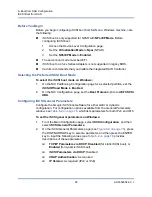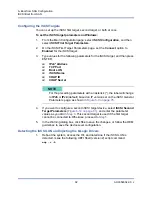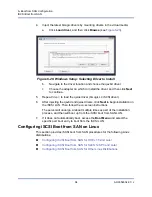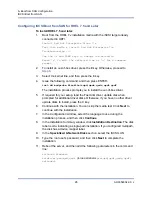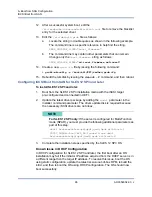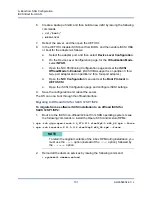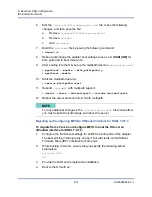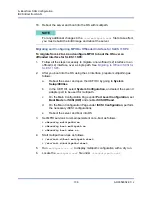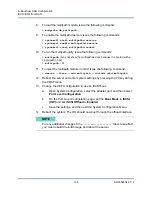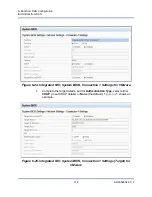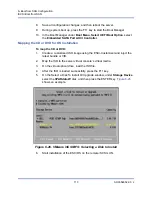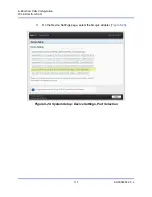
6–Boot from SAN Configuration
iSCSI Boot from SAN
102
AH0054602-00 J
3.
Enable iscsid and iscsiuio services (if they are not already enabled) by
issuing the following commands:
#
systemctl enable iscsid
#
systemctl enable iscsiuio
4.
Issue the following command:
cat /proc/cmdline
5.
Check if the OS has preserved any boot options, such as
ip=ibft
or
rd.iscsi.ibft
.
If there are preserved boot options, continue with
If there are no preserved boot options, skip to
6.
Edit the
/etc/default/grub
file and modify the
GRUB_CMDLINE_LINUX
value:
a.
Remove
rd.iscsi.ibft
(if present).
b.
Remove any
ip=<value>
boot options (if present).
c.
Add
rd.iscsi.firmware
. For older distros, add
iscsi_firmware
.
7.
Create a backup of the original
grub.cfg
file. The file is in the following
locations:
Legacy boot:
/boot/grub2/grub.cfg
UEFI boot:
/boot/efi/EFI/sles/grub.cfg
for SLES
8.
Create a new
grub.cfg
file by issuing the following command:
#
grub2-mkconfig -o <new file name>
9.
Compare the old
grub.cfg
file with the new
grub.cfg
file to verify your
changes.
10. Replace the original
grub.cfg
file with the new
grub.cfg
file.
11.
Build the
initramfs
file by issuing the following command:
#
dracut -f
12. Reboot the server, and then open the UEFI HII.
13. In the UEFI HII, disable iSCSI boot from BIOS, and then enable iSCSI HBA
or boot for the adapter as follows:
a.
Select the adapter port, and then select
Device Level Configuration
.
b.
On the Device Level Configuration page, for the
Virtualization Mode
,
select
NPAR
.



